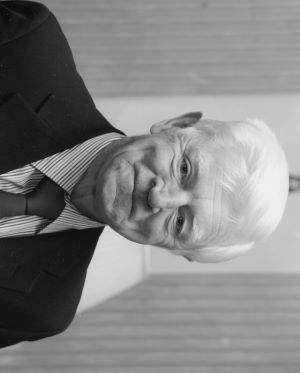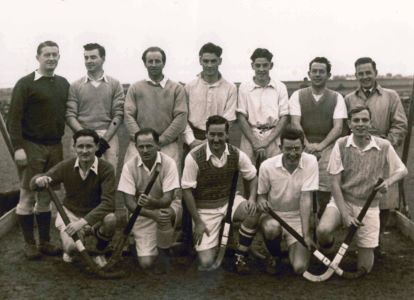Old Galway
THE POOLS

by Tom Kenny
The ladies and children’s bathing pools in Salthill were blessed by Canon Davis in 1930. These were two linked tidal pools which filled up when the tide came in and emptied when the tide went out. The floors were of sand so they were a perfect playground for children even when they had dried out. Thousands of children and adults learned how to swim there with Jimmy Cranny of Galway Swimming Club and Christy Dooley of Blackrock Swimming Club teaching organised groups on alternate evenings throughout the summer.
THE HANDING OVER OF GALWAY GAOL

by Tom Kenny
Galway City and County Gaols were built at the beginning of the nineteenth century on a large site which took up most of Nun’s Island. Construction was conditional on a right of way, the road all around the walls, also being built. James Hardiman, the historian described it as follows “The Prison …. Is built in the form of a crescent …. The interior of which is divided into eight wards ….. seperated by walls which form so many radii of a circle, and, terminating in the rear of the governor’s house, bringing the whole range within many of his windows, by which means he can, at a single glance, survey the entire”.
BOWLING GREEN

by Tom Kenny
Bowling Green first appears without a name on a map in 1608. It features a little later as Bóthar Alasandair or Alexander’s lane (eventually shortened to Sander’s Lane) which in turn was named after Alexander’s Tower, a medieval tower nearby. It is difficult to know exactly when the name Bowling Green originated, but we must presume there was a bowling green in the area at some point. On an Ordnance Survey map of 1839, the part of Bowling Green we see in our photograph was known as ‘Bowling Green Lane’ while the section connecting with Lombard Street was known as ‘The Bow’. Both sections are collectively known as Bowling Green today.
A VIEW FROM THE REAR OF THE SPANISH ARCH

by Tom Kenny
The Spanish Arch was not part of the original city walls but was built in 1584 as a measure to protect the city’s quays. It was originally known as Ceann an Bhalla or The Head of the Wall, a fortification that extended from Martin’s Tower to the river. Then in the 18th century, the Eyre family built Long Walk as an extension of the quays and a breakwater to construct a mud berth. A number of arches were constructed to allow access from the town to the new quay but unfortunately, an earthquake that occurred in Lisbon in 1755 resulted in a tsunami that destroyed some of these arches. In olden times, ships would have moored here unloading their cargo of Spanish wines and foodstuffs such as olive oil, spices, tea, coffee and cocoa. Later, these ships would have been replaced by Aran fishing boats unloading and selling their wares.
DANNO, THE QUINTESSENTIAL GALWEGIAN

by Tom Kenny
He was one of those people who was known to all by just the one name, Danno, and that was not even his actual name. He was born Francis Brendan Heaslip in Knocknacarra in 1938. Because he looked very like a boxing champion of the times, Danno O’Mahoney, he was given the nickname and it stuck. He was one of six siblings born to Joe Heaslip from Cork and Maureen O’Donoghue from Tuam: Minnie, Jimmy, Michael, Danno, Helen and Phil. They lived in Lenaboy Gardens in Salthill.
GALWAY HOCKEY CLUB

by Tom Kenny
In 1951 Hastings Elliott Jephson was working in the ESB in Galway when he had the idea of setting up a hockey club in the city. He and his friend George Bevis decided to see if there was merit in this notion, so they simply went from door to door around town asking people if they would have any interest in playing the game of hockey.
DONALL MAC AMHLAIGH, GENTELMAN, WRITER, EXILE

by Tom Kenny
This photograph of some of the staff of the Rockville Hotel was taken in the summer of 1947. They were all well-dressed which would have been normal in hotels in Salthill at the time, porters would have worn swallow-tail coats and waitresses proper uniforms. The Rockville was originally a guest house owned by a Mr. Kelleher who was a member of the RIC. It evolved into a small comfortable hotel owned by O’Neills (“Private bathing from the Hotel, Phone Salthill 70”) and later by people named Hynes. As the Rockville it had high standards and was fully licensed.
THE GALWAY SWORD AND MACE

by Tom Kenny
The Galway civic sword and mace are among the finest specimens of municipal corporation insignia in Ireland: the sword is particularly noteworthy and can be compared with the best of civic swords in these islands. Swords and maces were first carried by the king’s servants as symbols of the authority of the king himself. As time went on, the mayors and bailiffs of towns acquired swords and maces of their own, some following charter grants, others by mere assumption without specific authority. These were usually borne before the dignitaries concerned when they went in procession or were actively displayed when they acted otherwise in their official capacity. Maces, which were originally weapons, are staves of authority. Swords symbolise the legitimate use of force.
